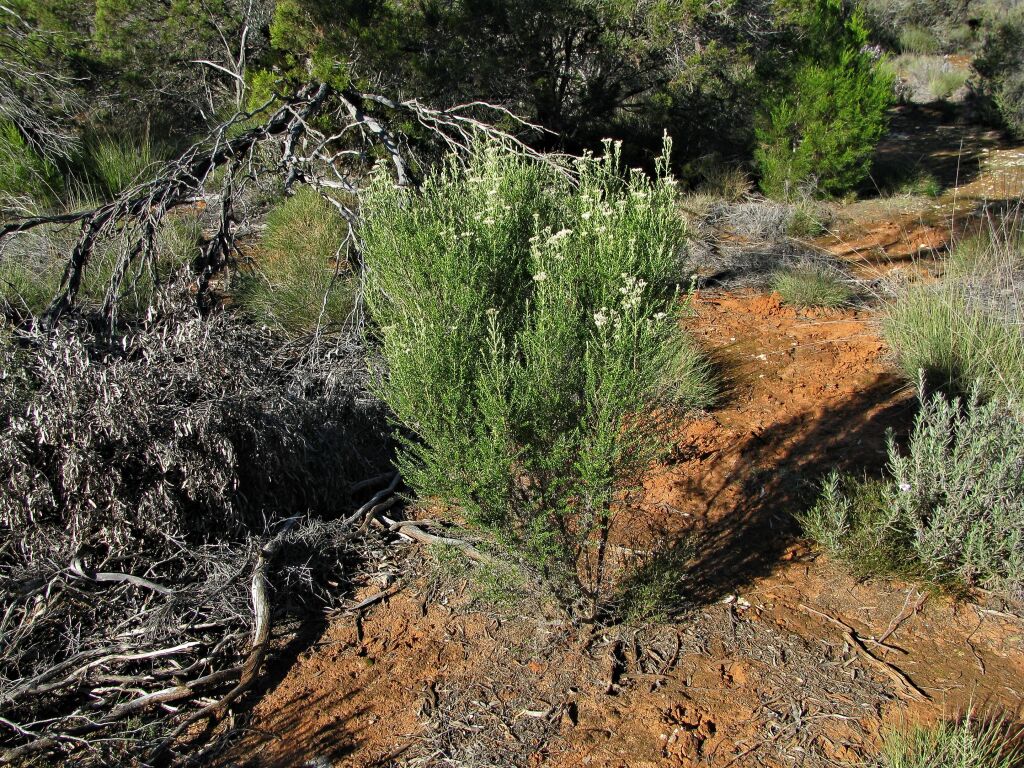Cassinia complanata
J.M.Black Smooth CassiniaErect or semierect shrub (0.2–)0.9–1.5(–2.0) m high; branchlets with moderately dense spreading multicellular hairs, viscid. Leaves semierect to spreading, sessile, narrowly linear to terete, (6–)9–40(–50) mm long, 0.75–1 mm wide, glabrous or with sparse to moderately dense short aculeate hairs above, dense white cottony hairs matted with yellowish resin beneath, apex tapering to an acute uncinate point, margins revolute to midrib. Inflorescences corymbose, 0.5–4 cm diam. Capitula 30–120(–400), white with greenish base, 5-angled, conical, 3.3–4.2(–5.0) mm long, c. 2–3 mm wide. Involucral bracts 15–25, 5-ranked, innermost with lamina deltoid, 1.5–2 mm long, erect, white; lamina margin entire, incurved. Receptacle bracts 1–4. Florets 5 or 6 (rarely 7). Cypsela oblong to obconical, (0.8–)0.9–1.1 mm long, glabrous or with sparse subsessile globular hairs (mainly towards apex); pappus bristles c. 2 mm long. Flowers Jan.–Feb.
LoM, MuM, Wim, VVP, Gold, CVU, GGr, DunT, EGL, HSF. Also SA. Understorey shrub of mallee and low tree-form Eucalyptus woodland on sandy soils in western Victoria from the Big and Little Desert areas to the Grampians and Mount Cole.
This species and the other Victorian species, Cassinia diminuta, C. maritima, Cassinia monticola and C. tegulata were previously included under a broadly circumscribed C. uncata. Cassinia uncata as is currently circumscribed occurs in inland New South Wales and in South Australia (Orchard 2007).
 Spinning
SpinningOrchard, A.E. (2007). The identity of Cassinia uncata A.Cunn. (Asteraceae: Gnaphalieae).. Telopea Telopea 11(4): 431–435.

